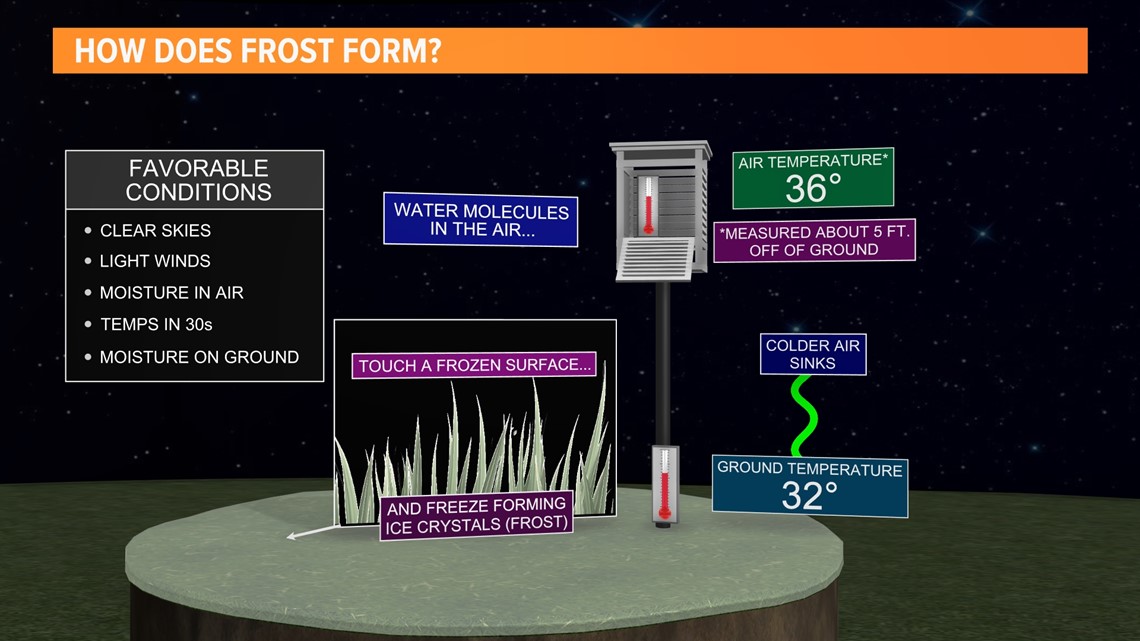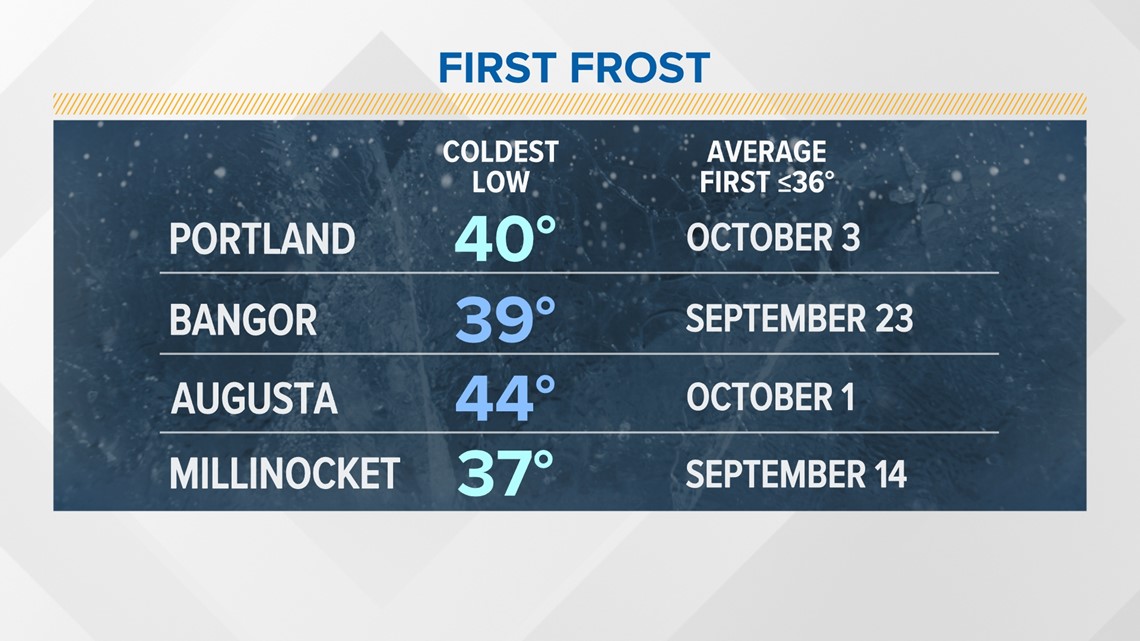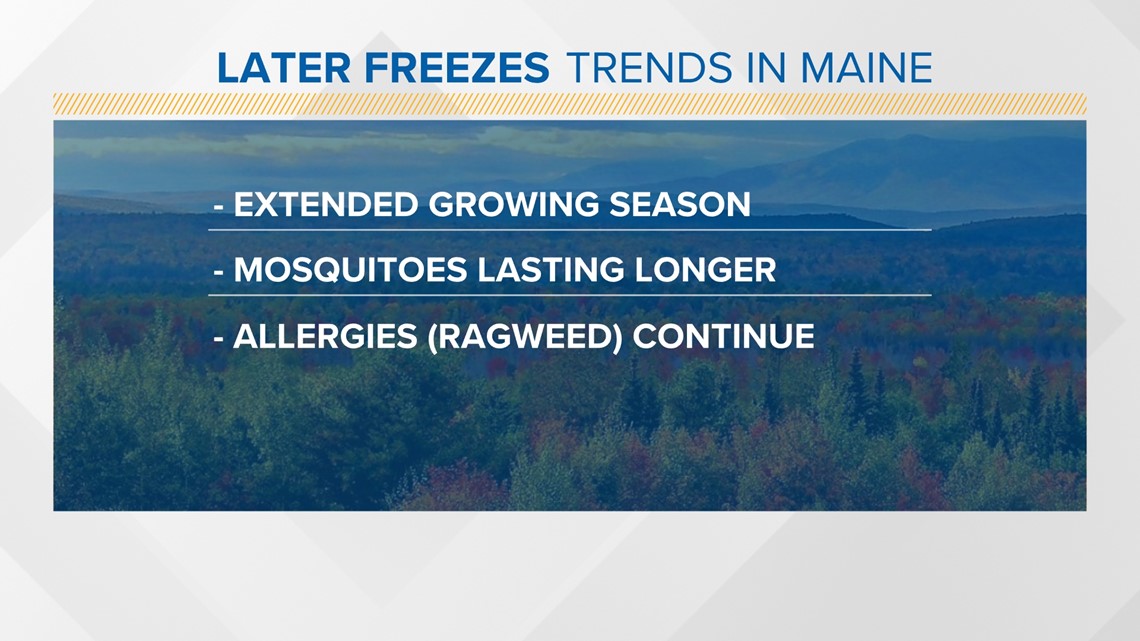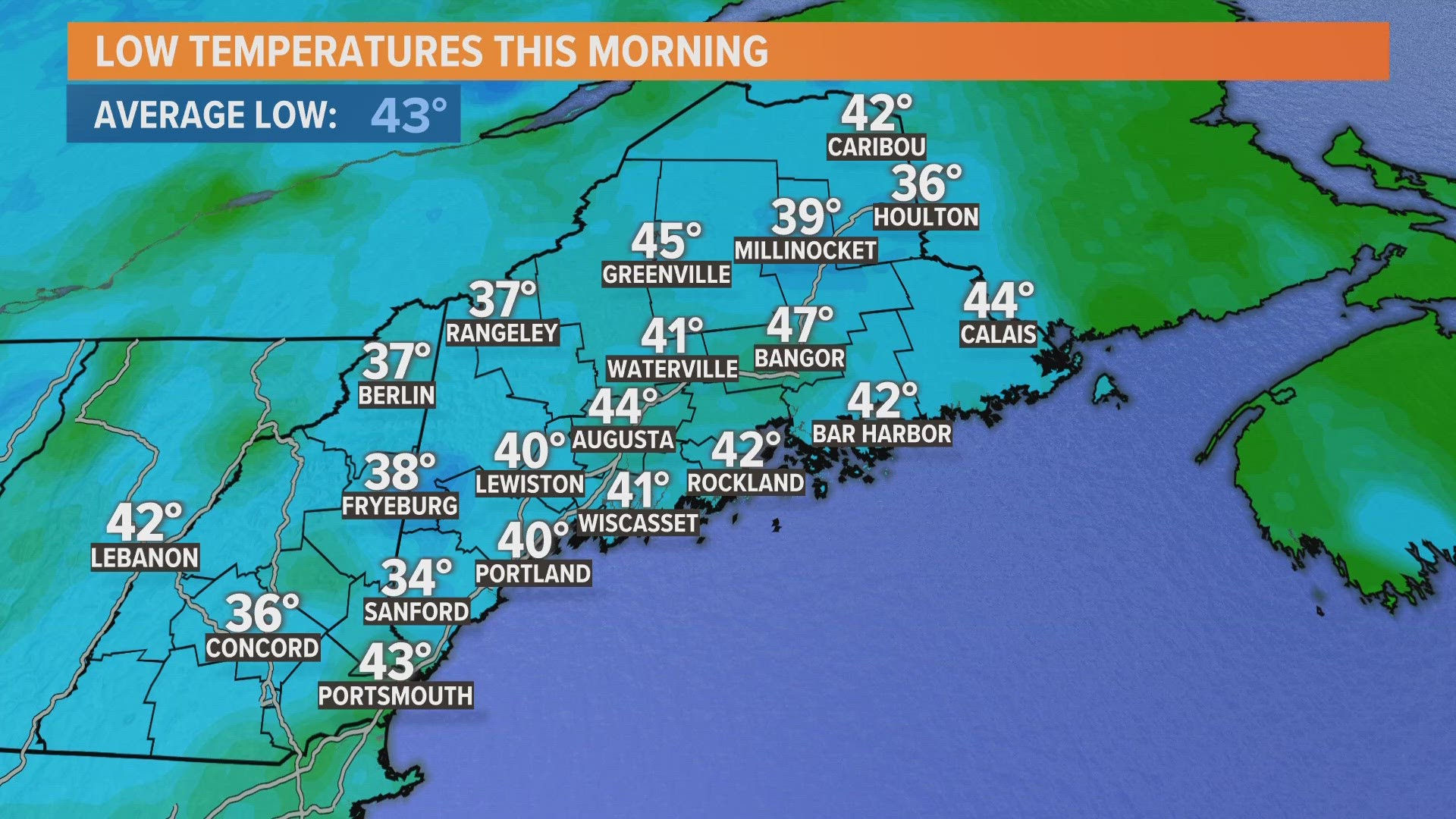MAINE, USA — It's that time of year. Leaves are turning, sweaters are coming out, and some areas are beginning to get a bit of frost ... but only some of us.
Frost starts to form when temperatures dip into the 30s. A good frame of reference is when the temperatures you see get to 36 degrees or less.
The reason it does not need to be 32 degrees or less for frost to form is a bit confusing. It's because of how we take temperatures. The temperature is taken about 5 feet above the ground to minimize the effect that the ground may have on the temperature. This means that cooler air can sink below the sensor to the ground, and those temperatures can get to freezing and help form frost.
So does frost form above freezing? No, but the way we take temperatures means that we could see frost forming when it's measured up to 36 degrees.


This year many Mainers haven't had a cool enough night for frost to form. Some of the coldest nights this year have been right around 40 degrees, but still not cold enough for frost.
We're behind this year. Millinocket should have had their first 36-degree low by Sept. 14, but they've only hit 37 so far. That same story applies to the majority of the state as well. It's just been a bit too warm.


Like anything in life, there is some good news and some bad news (with delayed frosts). This means the growing season can extend a bit later, but also means mosquitos can last longer. The "warmer" temperatures also mean that the allergy season is extended as well.


As we head into the rest of this season, we will notice temperatures continuing to drop, and frost starting to form soon.

